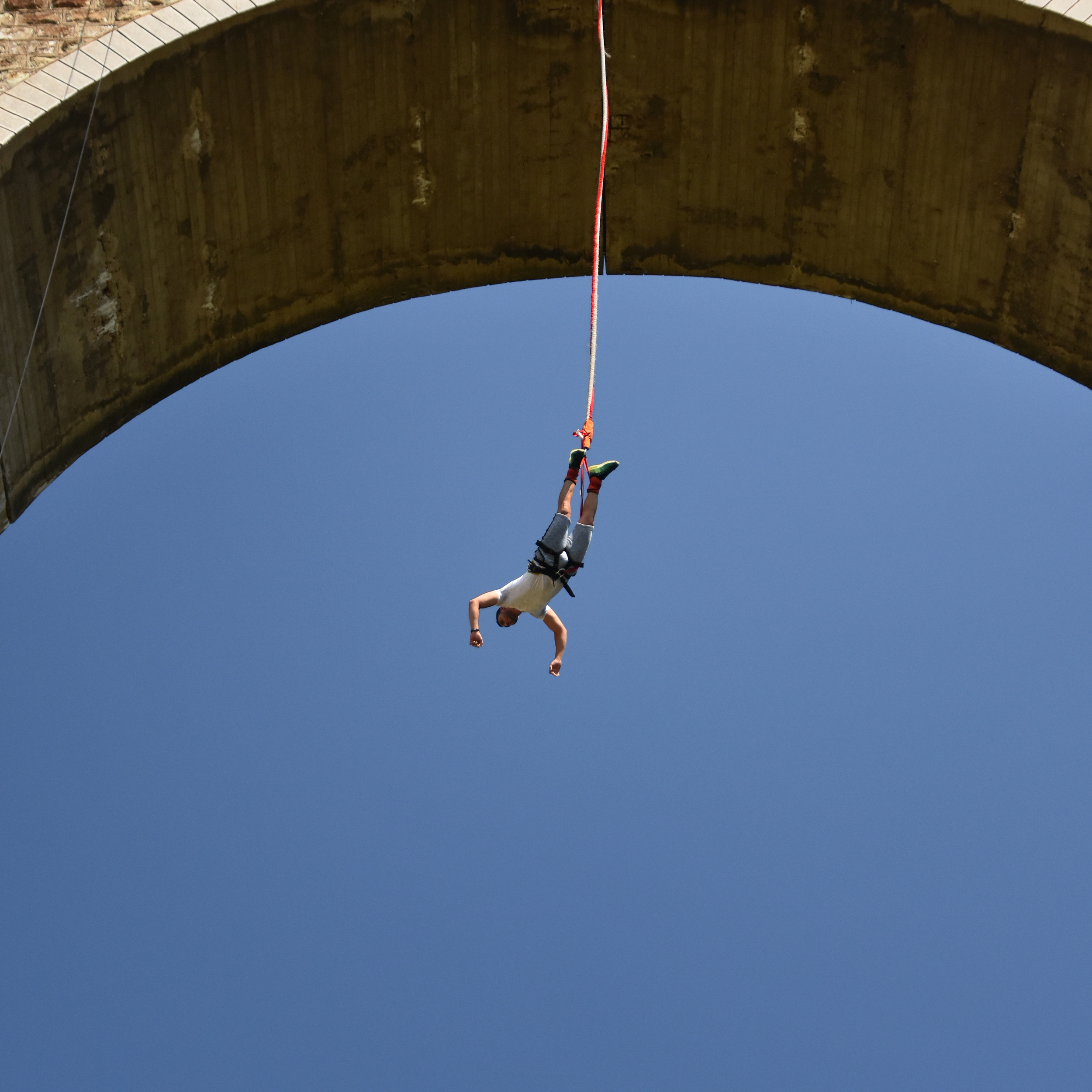Bungee jumping is an activity in which a person jumps from a high spot attached to a long elastic cord called a bungee cord. It is sometimes spelled bungy jumping. People often bungee jump from high bridges or tall towers. Thrill seekers enjoy bungee jumping because they experience the exhilaration of freefall before reaching the full extension of the cord. Bungee jumping is sometimes classified as an extreme sport. It can be dangerous without proper training and equipment. However, few people have died in bungee jumping accidents. 
Bungee cords are generally made of rubber with a fabric covering. One end of the cord is secured to a structure such as a bridge or building. The other end attaches to a harness worn by the jumper. When the cord has been secured, the jumper dives off the structure into open air. After reaching the end of the cord, the jumper bounces multiple times.
Bungee jumping may trace its roots to Pentecost Island, in the Vanuatu island group of the South Pacific. There, a traditional coming of age ritual involves young men jumping from a tower attached to stretchy vines. The practice gained widespread attention after being filmed by the National Geographic Society in 1970.
The modern sport of bungee jumping began in 1979 with members of a thrill-seeking group called the Oxford Dangerous Sports Club. They jumped off Clifton Suspension Bridge in Bristol , England, attached to elastic latex cords. The bridge is 245 feet (75 meters) high. Four members of the club introduced bungee jumping to the United States by jumping from the Golden Gate Bridge in San Francisco, California.
The New Zealand entrepreneur A. J. Hackett helped to develop and popularize the sport in the mid-1980’s. Hackett famously jumped from the Eiffel Tower in Paris in 1987. In 1988, he founded the first commercial bungee jumping company.
The American brothers John and Peter Kockelman pioneered commercial bungee jumping in the United States. In 1988, the Kockelman brothers started the company Bungee Adventures Inc. They jumped into ravines in the Sierra Nevada mountains; from the Golden Gate Bridge, hot-air balloons , and redwood trees; and in indoor coliseums and the atria (open halls) of office buildings. The company also pioneered many of the safety regulations of commercial bungee jumping.
The long, heavy-duty cords used for bungee jumping were first developed by the U.S. military for cargo parachutes delivering heavy loads. The cords are very stretchy, enabling them to slow and stop descents without jarring or injuring the jumper. Today, bungee jumping companies manufacture their own cords to their own specifications. They make, test, and replace their own cords.
